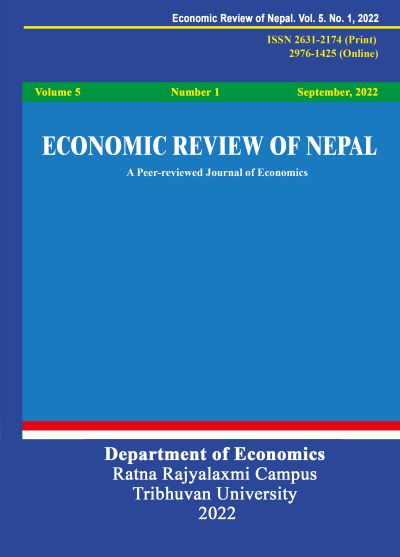Time-Varying Association between Military Spending and Economic Growth in Nepal: Evidence From Wavelet Analysis
DOI:
https://doi.org/10.3126/ern.v5i1.66034Keywords:
defense, economic development, investment, NepalAbstract
National defense is a public good, accounting for heavy public spending, and its effects on economic growth are multifaceted. The study is intended to examine the relationship between military spending and economic growth at different times and scales. The study employed wavelet coherence and partial wavelet coherence for its robustness—keeping the effects of investment and government spending aside—covering the data from 1975 to 2021 which was interpolated in quarterly form to address the frequency issues in the study. The overall findings revealed a significant negative leading association between military spending and economic growth in Nepal, except for the special context of 1976/77 and 2007 to 2009 during which it was positive. The findings indicated a stronger—and highly correlated—short-run time-frequency relationship than long-run within anti-phase and had different degrees of relationship across the frequencies or scales, excluding the special context in Nepal. This sort of time-varying and scale estimate was robust and was evident from partial wavelet coherence analysis, removing the effect of investment and government expenses from the original estimation. The study thus provides some insights to stakeholders and policymakers that they should be cautious about military spending, the institutionalization of the labor forces as a military, and the tremendous resource gap experienced in the economy of Nepal in a time-varying perspective.
Downloads
Downloads
Published
How to Cite
Issue
Section
License
Copyright (c) 2022 Department of Economics, Ratna Rajyalaxmi Campus

This work is licensed under a Creative Commons Attribution-NonCommercial 4.0 International License.
This license enables reusers to distribute, remix, adapt, and build upon the material in any medium or format for noncommercial purposes only, and only so long as attribution is given to the creator.




